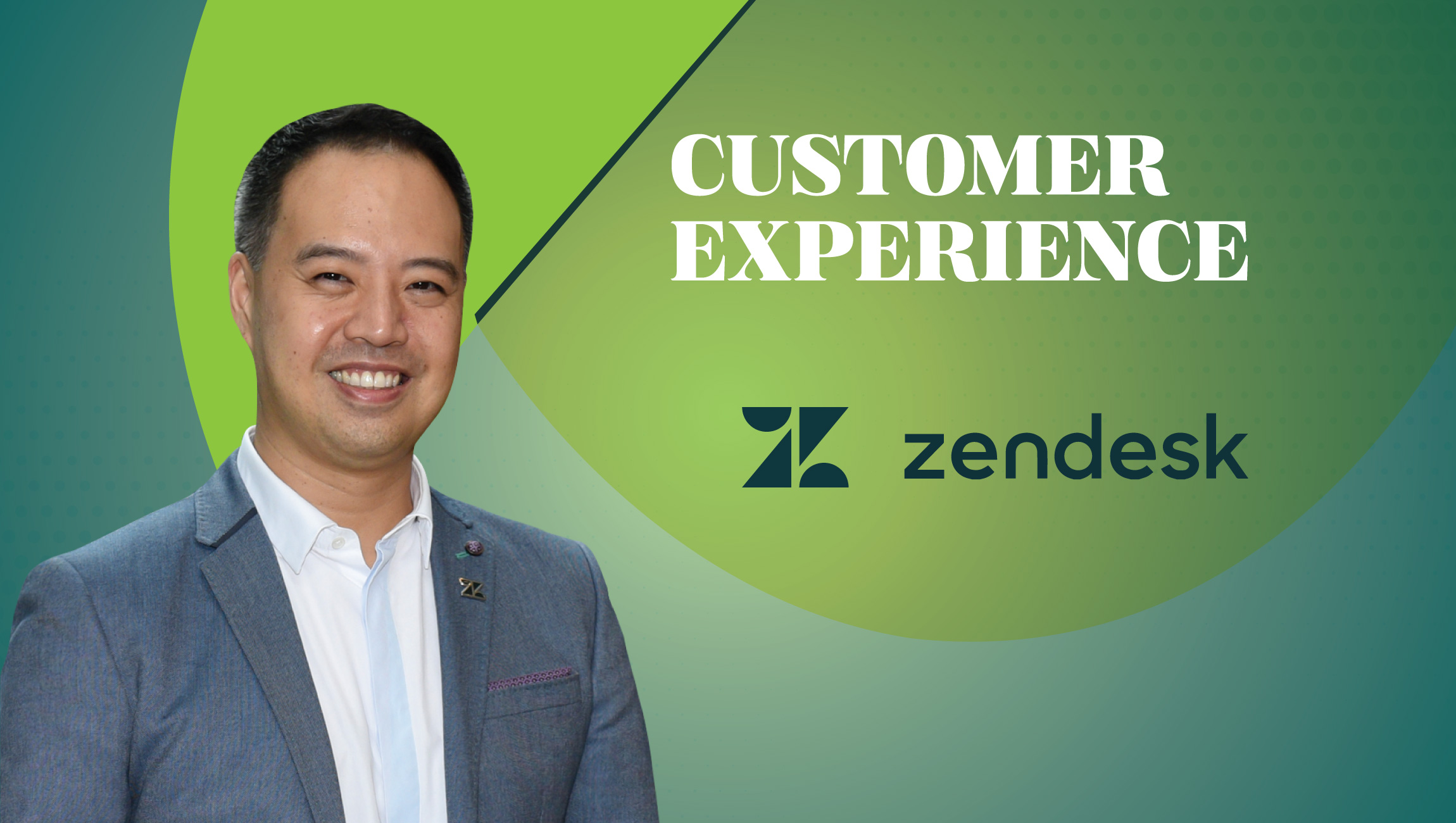Tell us about your role and the team/technology you handle at Zendesk.
As the Customer Experience Strategist and Customer-in-Residence for the Asia Pacific (APAC), my role is to step into the shoes of current and future Zendesk customers and partners to get a deep understanding of their business. This allows me to help them figure out how to optimize their customer experience (CX) strategy in ways that matter to their business. I start by understanding their CX strategy and then analyzing their business operations and customer data in order to provide the right insights that will they scale and become more efficient.
What I love doing most is speaking with other CX leaders about the challenges they face and global best practices. What makes this interesting is that customers no longer compare brands to their competitors, but to the best experience they have ever had. Instead of viewing this as a challenge, brands can see this as an opportunity to approach how they meet customer expectations from different perspectives.
How does Zendesk define Customer Experience Management for Omnichannel B2B campaigns?
Customer Experience Management (CXM) is now about adding value to customers and building a stronger relationship with them. At Zendesk, we see CXM as a step beyond the traditional, one-way, Sales-focused approach, moving towards a more open and flexible view of the entire customer journey. Good CXM focuses on creating real value and collaborating with customers to help address the challenges they are facing.
Traditionally, B2B campaigns engage multiple stakeholders across a variety of channels, which often results in the message being lost due to organizational silos or complex structures within a company. We work with customers to help break down those silos and remind them that their customers – whether B2B or B2C – see them as one company, not separate departments.
To achieve a seamless CXM, companies need to integrate their systems and collaborate more by adopting solutions that allow them to see all their customer data and interactions in one place. This will empower them to make better, more informed decisions based on a complete view of the customer.
How do you bring Marketing strategies and technologies together to deliver customer experience?
Successful CX is often described as the art behind the science. I’ll let you decide which is art and which is science! The same could be said for Marketing and Technology.
Marketing and Technology functions are two of the most data-driven disciplines, which thrive on the insights drawn from vast pools of customer behavior data. So when it comes to bringing Marketing strategies and technologies together, the main objective is simple: to put your customers at the center of your business. To paraphrase Steve Jobs, you should work backward from the customer experience you want to provide to the technology you need to make it happen. The result is a product that reflects a thoughtfully designed customer experience.
The advice I give customers is to revisit what your brand or product’s job is, and begin to breakdown any data silos that exist.
How is the APAC market for customer experience products and solutions different from those in North America and Western Europe?
It’s true that North American and much of Europe are more technologically mature than APAC, and therefore are different in terms of technology adoption. Many enterprise businesses in North America and Western Europe have established infrastructure and processes and are in a stage of upgrading their legacy systems. However, businesses in APAC are often integrating digital customer experience solutions for the first time, which often impacts how quickly these businesses adopt the tools.
The biggest difference I see is how complex the APAC region is due to the breadth of diversity, and each market’s unique needs. For example, language support is more of a focus across APAC, due to individual markets often requiring multiple language support as well as English. This type of complexity can extend to data privacy as well, which brings new challenges to scaling CX.
Additionally, different regions respond to solutions in different ways – for instance, the prevalence of smartphones across Asia has caused major shifts in how businesses engage their customers, resulting in chat support channels boosting in popularity. More people across APAC expect to be able to chat with or message businesses in the same convenient way they do with their friends, family, and colleagues. This is consistent with our CX trends research, which found chat to be one of the fastest-growing CX channels in 2019.
What is Personalization and how does it impact customer experience values?
Successful products and services are developed around core features that appeal to a customer’s needs. But what makes a product truly great is the ability to personalize the customer experience beyond mass appeal. Our data shows Personalization – and sometimes even Hyper-Personalization – is expected, but at the same time, customers can be suspicious about how data is used and may hesitate before providing information. What makes the topic of Personalization even more complicated is that the line of over-personalization is different for everyone.
However, the sensibility seems to be that Personalization is appreciated when data is used to add value to the customer’s experience. For example, I always include coffee capsules in my online grocery order. I find it helpful to get an email that reminds me to order more every other week as I might be running low, or a popup reminder before I click the pay button on my next order if I’ve forgotten to add them. Alternatively, if I receive an alert from a restaurant review site suggesting other places to eat within a 5-minute walk of my current location, I personally would feel like that’s intrusive and misuse of my data.
The main takeaway is that businesses need to be sensitive when using customer data and always question whether it’s being used to add value to their customers.
What are the biggest challenges you face in delivering real-time customer experience? How do you measure the impact of your customer experience efforts?
Providing real-time customer experience comes with its challenges, but one that looms largest is when fast judgment calls need to be made in order to prevent a drop in customer satisfaction. In fact, customers now expect that businesses are able to identify an issue before they have even noticed themselves, and reach out to proactively provide a solution.
When customers need support, they expect the response time to reflect the complexity of their inquiry. A simple question about shipping costs and delivery options, for example, should take minutes, and could even be found without an agent’s support via self-help. But a more complex issue, such as an incorrect charge to your mobile phone bill, might take hours (or even days) and multiple agents to help solve.
Businesses often measure their CX success through metrics like CSAT scores that take into consideration first response time, customer wait times, and resolution times. But measuring the true value of CX goes beyond this to include loyalty and repurchase rate. It’s also not just all about customer satisfaction, but also employee satisfaction and the quality of the CX team’s work. By examining a combination of internal and external factors surrounding CX success, businesses can start to have a more holistic, and more strategic overview of their results.
What is your prediction on the disruptive application of AI-solutions in video and mobile-centric customer experience campaigns? How do these applications impact localized Sales and Marketing platforms?
Mobile-centric CX is fast becoming one of the most important channels for customers – especially across APAC, where smartphones are used for everything from messaging, gaming, entertainment, and shopping to banking, making bill payments, and even storing government-issued digital IDs. As customers spend more time on their devices, businesses need to meet their customers on a number of mobile platforms. Omnichannel solutions that allow you to switch between different connected channels of communication without losing focus are fast becoming the new norm.
As Omnichannel solutions grow in popularity, so do AI-powered CX tools, such as chatbots that integrate with messaging apps and social media platforms like Discord. Beyond this, APIs can leverage AI to create stronger data support systems and provide better experiences. Building on tools that assist with processing helps to lay the groundwork for an eventual full AI solution that automates processes such as heavy transactions, for example.
With disruption comes change – most importantly to the ways businesses engage with and better understand their customers. On a local level, you can measure the impact of the changes you make, run better predictive models, and test the efficacy of different offers on different segments of your audience before integrating changes across the board. Armed with this data, businesses can more easily discover what resonates most with their customers, and then implement those to provide a CX that is truly customer-centric.
Malcolm Koh is no customer experience rookie. With over 15 years experience spanning retail, airlines, hotels, banking, financial services, game changing startups and software, he has worked with some of the world’s most customer-centric brands.
Koh recently joined Zendesk Asia Pacific’s Go To Market team, responsible for helping existing customers scale their business and working with Enterprise customers to develop seamless, Omnichannel solutions. As Customer Experience Strategist, he works with existing and potential clients and partners who share in his passion for optimizing operations to drive bottom-line value while maximizing superior customer experiences.
Prior to embarking on his next career adventure with Zendesk, Malcolm was Head of Customer Experience at Grab Singapore, one of the brand’s largest and most important markets in its growing network.
The best customer experiences are built with Zendesk. Zendesk’s powerful and flexible customer service and engagement platform scale to meet the needs of any business, from startups and small businesses to growth companies and enterprises.
Zendesk serves businesses across a multitude of industries, with more than 100,000 paid customer accounts offering service and support in more than 30 languages. Headquartered in San Francisco, Zendesk operates worldwide with 15 offices in North America, Europe, Asia, Australia, and South America.











